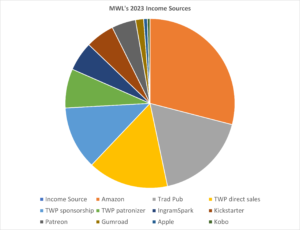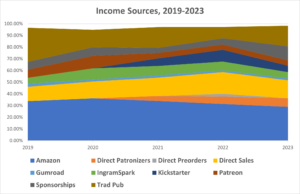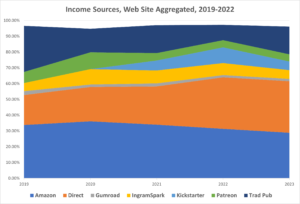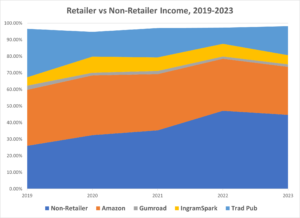Yesterday I posted about Findaway Voice’s rights grab. Last night I received this email from Findaway Voices.
Earlier today, we shared planned updates to our Findaway Voices by Spotify. Terms of Use that are set to take effect on March 15, 2024. Our goal was to introduce language that would allow us to offer authors innovative features, improve discovery, and provide promotional tools such as share cards while assuring authors that you “retain ownership of your User Content when you post it to the Service.”
In the hours since, we’ve received valuable feedback, and we understand that there is confusion and concern about some aspects of this language. We want you to know that we hear you and are actively working to make clarifying updates to alleviate your concerns.
We are deeply committed to your success on Spotify. In the meantime, please stay tuned for more details.
I’m not going to bother ripping this apart line-by-line, but I will comment on “confusion and concern about some aspects of this language.” We are concerned because there is no confusion. I am not a lawyer, but I am accustomed to reading rights agreements. They haven’t even agreed to delay the implementation of these license terms. Those terms were reviewed by a lawyer and were not mistakenly uploaded by some overworked developer. A press release does not override a legal agreement.
It’s been suggested that this was an example of a lazy lawyer copying from an existing agreement. A person’s motives don’t matter. Only the harm they inflict matter. And if Spotify has this boilerplate lying around to copy from, that’s a really bad indicator.
I have no doubt that they will follow up with something less objectionable, but the problem is: they’ve shown their goals. They have written down and showed us what they want to achieve, and it is hostile to writers making a living.
Many musicians dislike Spotify. I can’t say all of them hate it, because there’s always an exception. Multiple musicians have removed their music from Spotify. Taylor Swift pulled her music from it. It reappeared without explanation, which is business-speak for “after years of discussion we negotiated an acceptable deal that included an NDA.” Good for her.
My first book came out in 1992. I’ve been through the business wringer. When I have a business question these days, I ask myself “what would Taylor Swift do?” (Or WW James Patterson D, depending on the problem).
Corey Doctorow made a splash with his neologism enshittification. It’s short, punchy, and has great emotional impact, but the concept is not new. Every public corporation in the Western world has the goal of permanently binding customers to them. They want to be the sole customer for their suppliers. Every company has tried this, for decades if not centuries. Ubiquitous computing and digital distribution of art has given them a huge new tool.
Remember that you don’t write books. You create and license intellectual property. Read the Copyright Handbook. The new edition is on top of my TBR pile.
My strenuous advice to everyone is: do not become dependent upon any one business partner. Be able to pivot at any time. Do not take bad deals that lock you into a single customer or allow others to pillage your intellectual property. Those Spotify terms? They allow any use of your audiobook. Run it through text-to-speech and then through text-to-video AI. Poof, there’s the movie. It’ll be a bad movie, because film is a distinct art from books, but its mere existence will hurt the value of your film rights.
I set up my own bookstore a decade ago, and spent ten years refining it. I turn down bad deals from publishers.
Writing is a long-term game. A career in creativity is the greatest life I can imagine, but it takes decades. If you need money now, rob a billionaire. My goal is to spend the rest of my life doing work that I enjoy. That means telling the exploiters “no.”






